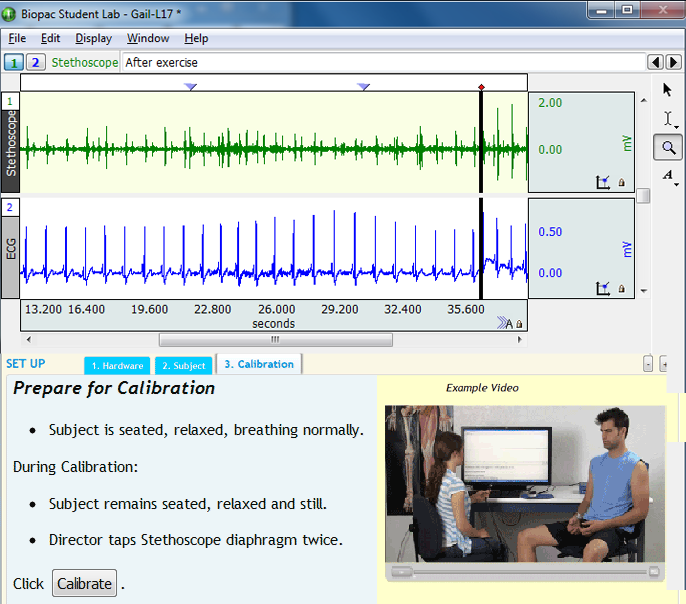L17 Heart Sounds

In this BSL Heart Sounds Lesson, students listen to their own heart sounds by positioning the SS30LA Stethoscope* over the aortic semilunar, pulmonic semilunar, tricuspid, and mitral (bicuspid) valves. They will distinguish the volume, pitch and duration of the sound at each point and determine the point where sounds are best heard, which will be used as the recording point for the heart sounds.
Students will also record Lead II ECG and compare the mechanical events (heart sounds) with the electrical events (ECG) of the cardiac cycle.
* Also works with older SS30L Stethoscope for MP3X, and BSL 4.0.2 and above includes a headphone output option for monitoring stethoscope sounds through OUT1/OUT1A/40HP via the MP Analog Output or headphone jack.
Experimental Objectives
- To listen to human heart sounds and describe them as to loudness, pitch, and duration.
- To correlate heart sounds with the mechanical events of the cardiac cycle.
Tasks Performed by the Student
BSL Lessons are designed to allow at least four students to record and save data in a normal lab period (60-90 minutes). Typically, labs work most efficiently with three or more students working together at each BSL station.
- Listen to heart sounds through a stethoscope placed on the chest over four major heart valves.
- Record sounds from the location where heart sounds are best described.
- Record Lead II ECG.
- Exercise to elevate the heart rate and repeat the recording.
Videos
BSL 4 L17 Heart Sounds - Electrical & Mechanical Events
Biopac Student Lab Student Download
Lesson Hardware
This lesson requires a Biopac Student Lab (BSL) System and the following hardware. If your BSL System does not include all hardware items, expand your system by selecting required items below. For more details, review the Lesson: L# BSL Lessons - see the Lab Manual or launch BSL; A# and H# BSL PRO Lessons, click the PDF link above to review full setup, recording, and analysis procedures.
Stay Connected